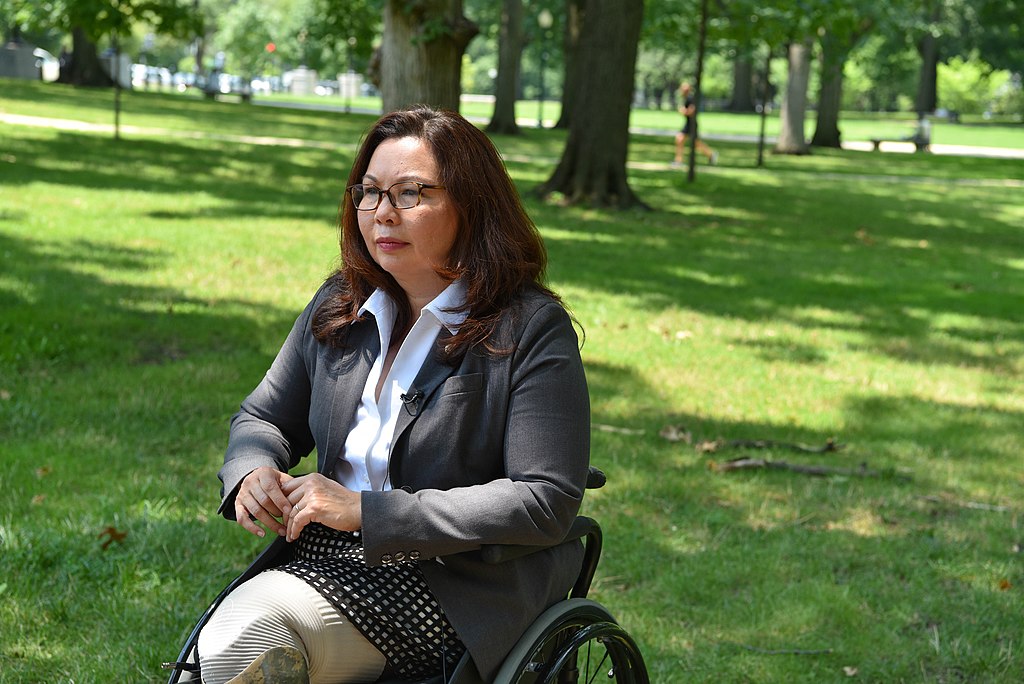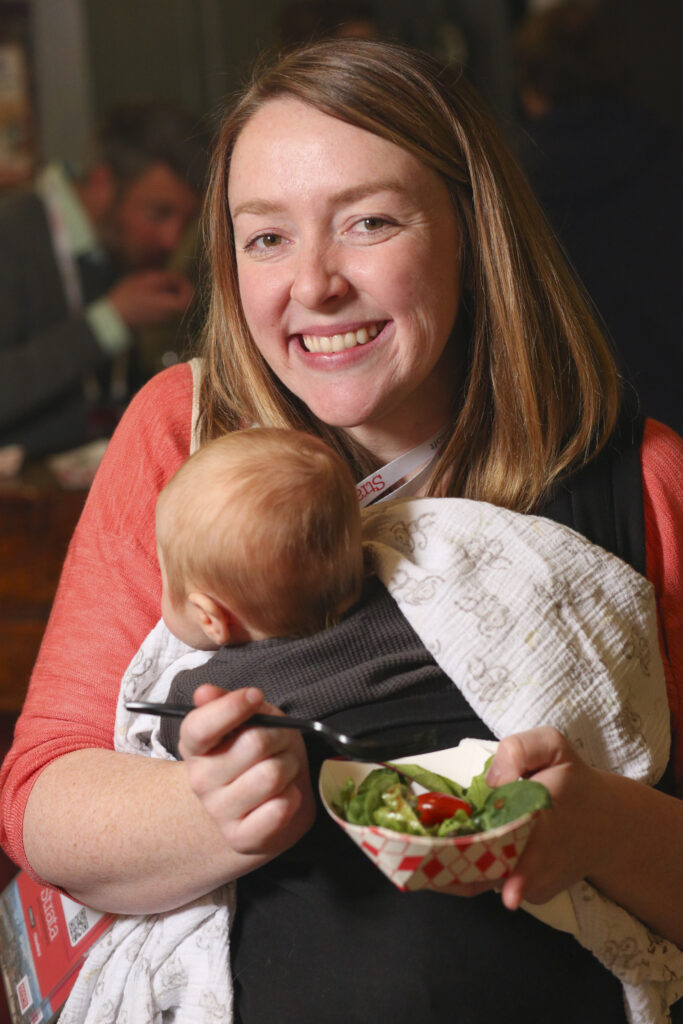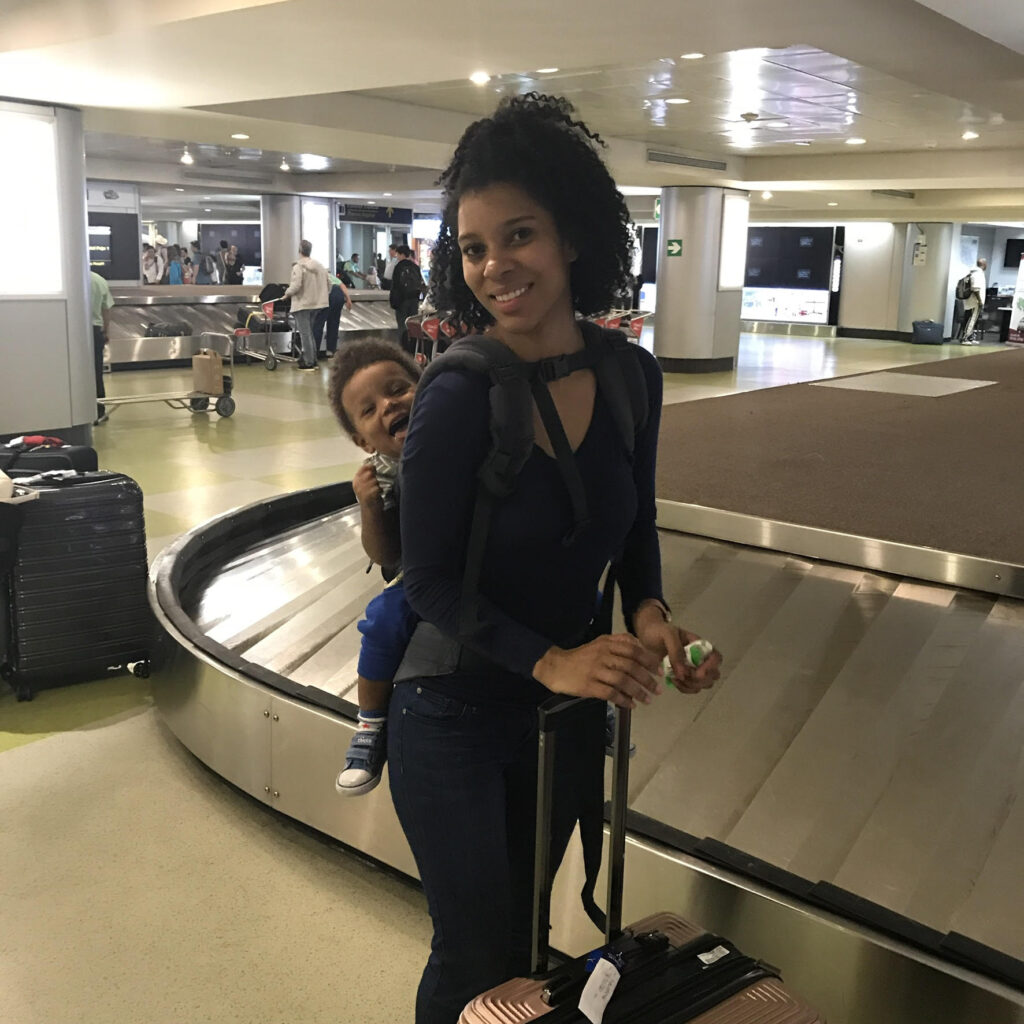Bipartisan legislation known as The Friendly Airports for Mothers (FAM) Improvement Act, introduced by Sen. Tammy Duckworth (D-Ill.) was signed into law. It will ensure all airports support breastfeeding travelers.

Kristin Debreaux has always loved traveling, so when she gave birth to her son Levi, it was a passion she knew she wanted to share. To date, they’ve been to six countries together and on dozens of flights, navigating not only airport accommodations but societal perceptions of mothers traveling with their children.
In 2016, with six-month-year-old Levi in tow, Debreaux set off for their first international flight together. When she arrived at the airport and needed to breastfeed, Debreaux found her options were limited, settling for the nearest restroom.

“I just remember it being a really disgusting experience. You’re sitting in an area that you know is full of bacteria,” said Debreaux, who’s a pediatric neurodevelopment resident physician. “I remember feeling kind of sick to my stomach by the smells of the area, and I’m not even the person eating.”
Her experience in that airport bathroom changed the way she approached breastfeeding and traveling—at least in the U.S.
“The place that I felt the least comfortable and the least safe breastfeeding were actually American airports,” Debreaux said. “I started nursing publicly … and became like a champion for public nursing or cover-free nursing because with a kid and a lot of noises in the airport, they’re not keeping the cover on, they want to see what’s going on around them.”
Debreaux’s experience breastfeeding in an airport bathroom is far from unusual.
Karlee Vincent, who traveled for work while she breastfed her daughter, had the difficult task of needing to pump every two hours—often while in airports. (Nursing mothers need to pump regularly, or they can be exposed to certain health risks, such as less milk production.)

On one particular trip through John F. Kennedy International Airport in 2018, Vincent exited security to get her bag. That limited her options for pumping to a family restroom.
“The floor, the sink, the changing table—everything was just this nasty shade of brown,” Vincent said. “I immediately realized that the door didn’t close completely, so there was about a four inch gap. And not once, but twice while I was in there, people tried to walk in.”
Health and Breastfeeding
Medical professionals recommend mothers who choose to breastfeed do so for at least six months in order to reap the health benefits for both mother and child. During this time, mothers need to express milk frequently or be at risk for health issues, such as engorgement, which can cause the mother intense pain or a low-grade fever and can make it harder for the baby to latch on to the nipple.
A preventative measure to engorgement is pumping or breastfeeding regularly and getting enough milk removed.
But public bathrooms don’t always offer a stress-free environment to do this. Vincent said she felt self-conscious and stressed while lactating in airport restrooms, which affected how much milk she was able to express.
“I was only getting about one and a half ounces out of both breasts. And normally, to just kind of give you perspective of like in a normal pumping session for myself, I would get about six ounces,” Vincent said.
Vincent’s experience caused her to become a vocal advocate for working moms who breastfeed—including implementing new policies at her workplace and later starting a consulting company to help working and nursing moms called the Traveling Milk Truck.
Since their breastfeeding and traveling experiences, Vincent and Debreaux have noted seeing improvements over the past few years.
One of those improvements include private areas throughout airport terminals that are made for nursing mothers.
A Legislative Solution: The Friendly Airports for Mothers (FAM) Improvement Act
A reason for these new lactation spaces is bipartisan legislation called The Friendly Airports for Mothers (FAM) Improvement Act, introduced by Sen. Tammy Duckworth (D-Ill.). Amid the hectic 2020 presidential election, Sen. Duckworth saw her most recent bill get signed into law October 30, which requires small airports to have designated lactation spaces by 2023.
This law piggybacks off previous legislation that required large and medium airports to install lactation spaces by 2021. Costs are covered through the Airport Improvement Program funding.
While the number of travelers overall in the U.S. is down due to COVID-19, this offers a unique opportunity for facility improvements.
Duckworth, a mother herself and a woman with a disability, personally understands the concerns of finding clean and accessible spaces to breastfeed. In 2014, she was waiting to use the accessible bathroom stall before catching a flight.
“Finally I was like, ‘Listen, I have to use the bathroom. I’m in a wheelchair,’” Sen. Duckworth told Ms.
Duckworth said a woman came out of the stall with breast pumps attached, looking visibly “mortified.”
“In order for me to use the bathroom, a nursing mom had to come out like that,” Duckworth said. “And so that to me was just like, ‘This is wrong. Why are we fighting over a single handicap stall?’”
So What Does an Ideal Lactation Space Look Like?
The FAM Act lays out what we can expect in upcoming lactation areas: a space separate from a bathroom that has outlets, seating, a horizontal surface and is accessible.
Duckworth said, “It can’t just be a closet somewhere where someone with a wheelchair can’t get into it. And it has to be fully accessible both in terms of availability and physical accessibility.”
When it comes to accessibility, Kevin Fritz is an expert. As a lawyer at Seyfarth Shaw LLP, he helps businesses and other clients navigate through accessibility and discriminatory concerns, including lactation spaces.
“Being accessible for your customers, it makes good business sense, but it also provides an opportunity for customers to come back and buy your goods and services,” Fritz said.
So what does an accessible lactation space look like? The Americans with Disabilities Act doesn’t explicitly lay it out, but Fritz said we can look to other legislation and accessibility guidelines to give us clues. A few things to consider: ease of getting to the space, if the space has stairs, height of shelving or tables in the space and how easy it is to get to an outlet.

Starting a new initiative offers an ideal opportunity to think through these details.
Fritz said the FAM Act could create more legislation aimed at making public accessible spaces in the future.
“Grocery stores are another example of a large entity that may be required to provide some sort of separate space for lactation,” Fritz said. “I want to be careful that I’m not referring to employees. Already, our laws require that employers have a space for their employees to lactate, so this is completely different.”
What Will People Think?
The experiences described by Debreaux, Vincent and Duckworth point to a larger issue around breastfeeding mothers: societal perception.
National surveys show consistently that a majority of responders are supportive of breastfeeding in public. In one 2018 survey, respondents were asked if “public buildings need to have a room where women could breastfeed and pump milk for their babies.” Nearly 67 percent of people said yes.
Yet when I spoke to mothers, their experiences show that progress still needs to be made.
“Sometimes you’re going to get mean looks or kind of be made to feel like you’re doing something wrong when you’re just feeding your kid,” Debreaux recalled. “There’s a time I was called an exhibitionist.”
For Duckworth, the message is that supporting mothers and the next generation through legislation like this or paid parental leave and other resources will only benefit us all.
“If we don’t support our children, how did they grow up to be productive adults?” Duckworth asked. “If they don’t get enough prenatal care, if they don’t get the health care support that they need, if they don’t get the breast milk when they are growing in their most formative months of life. We can and should do better.”
You may also like:





